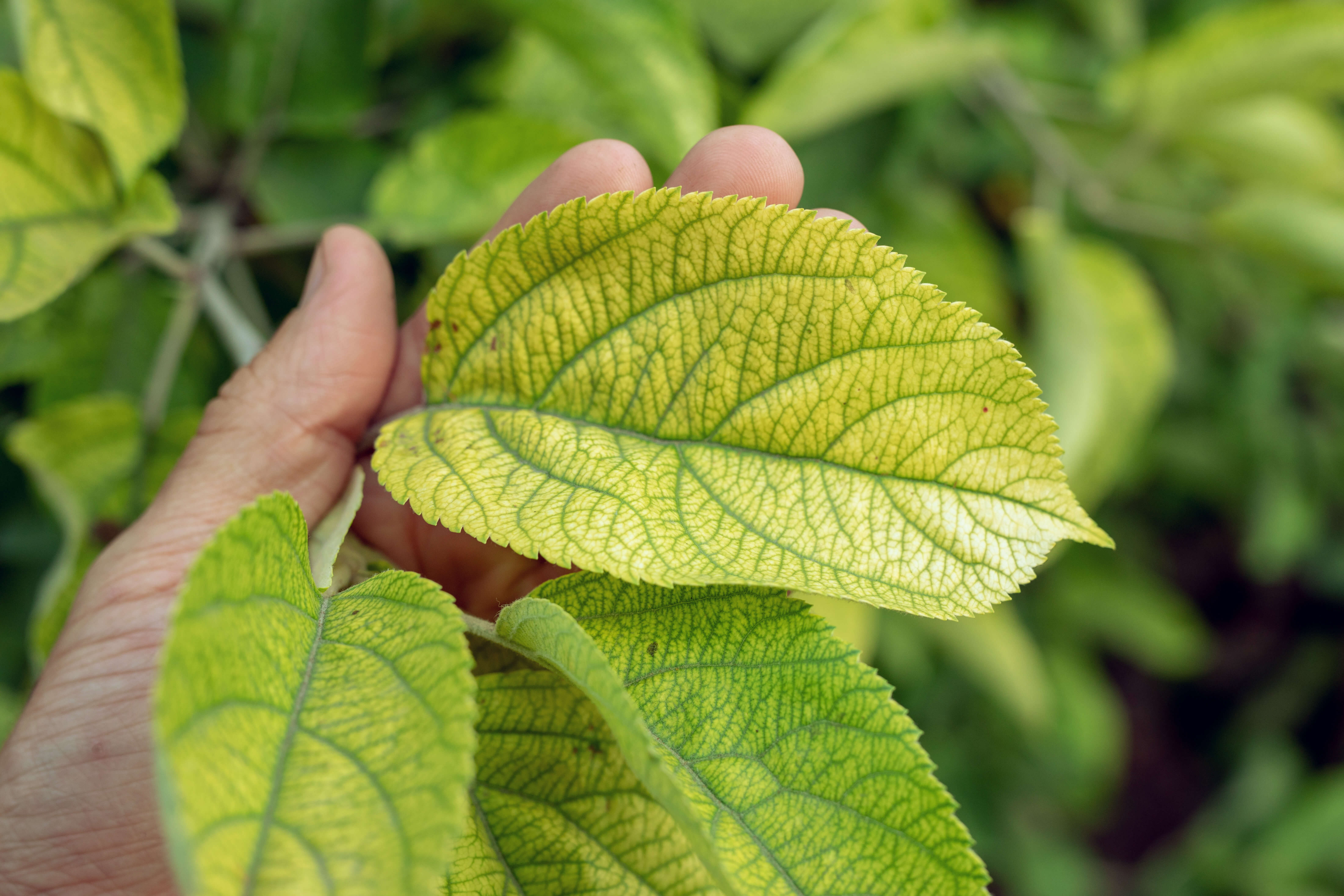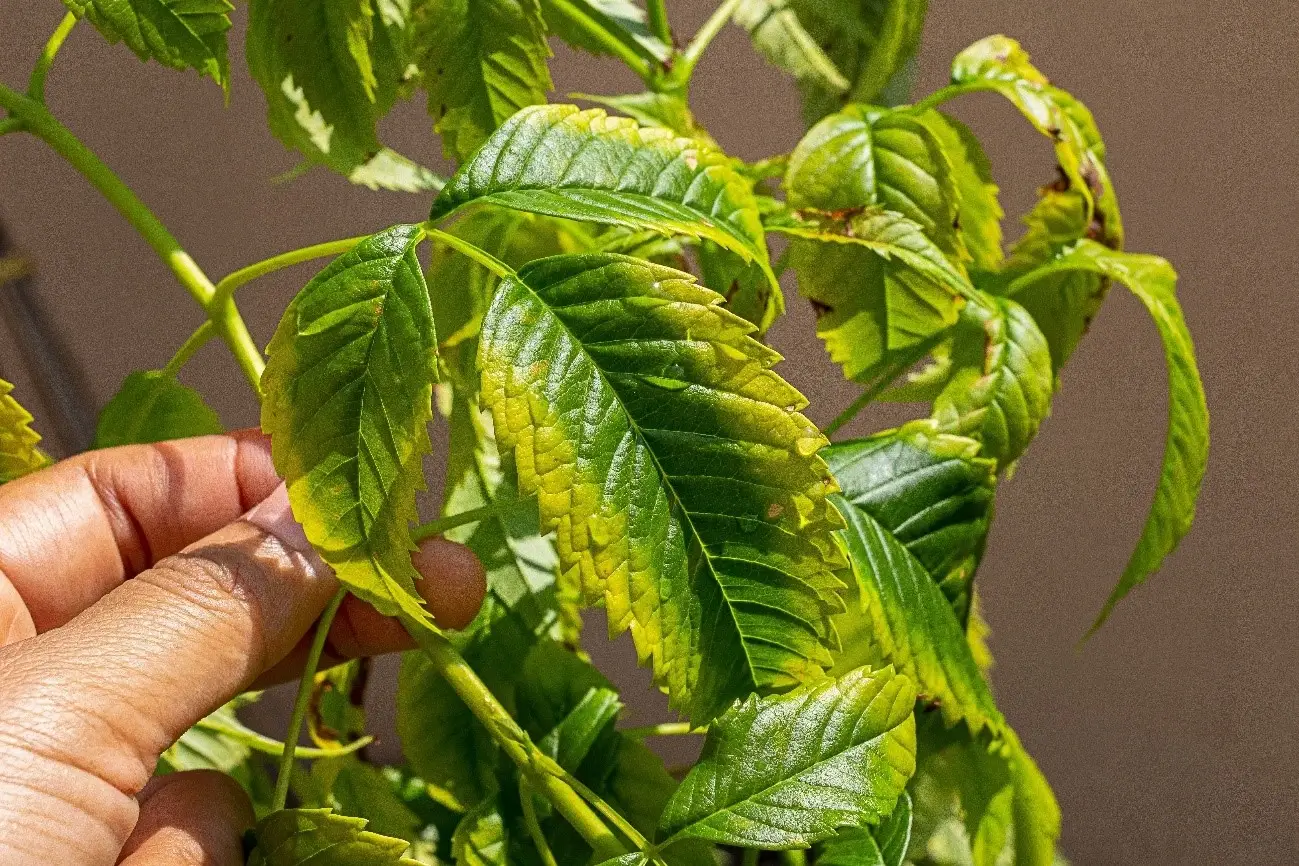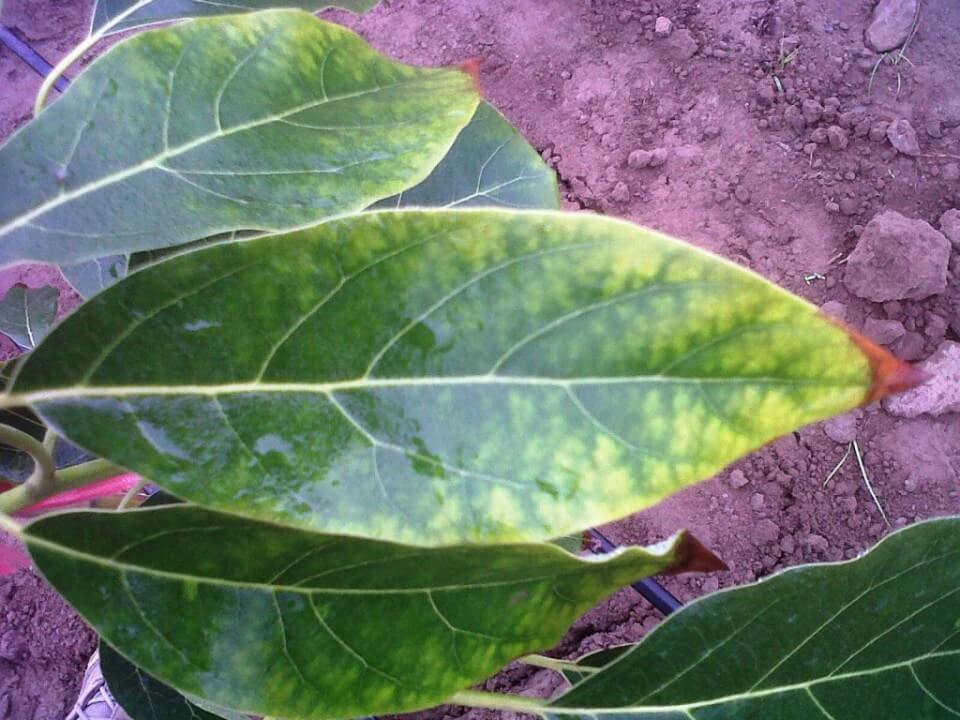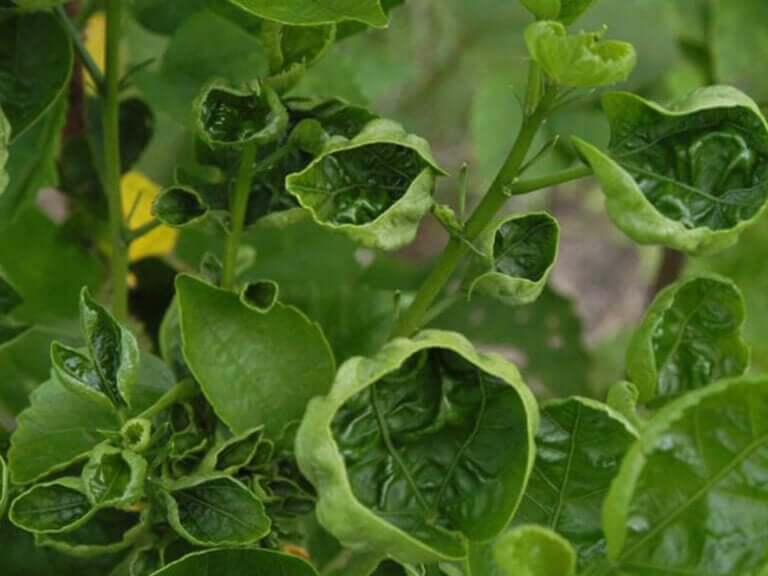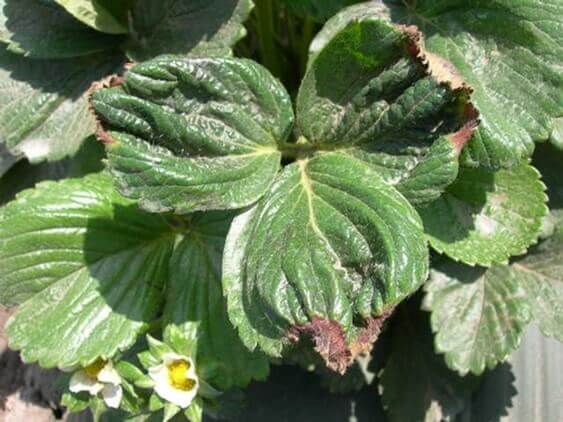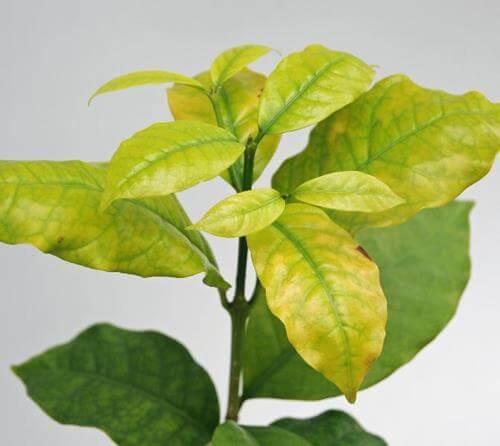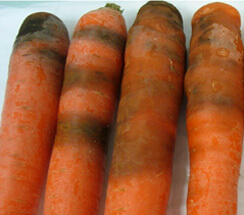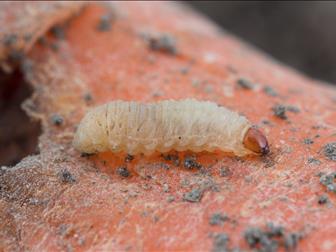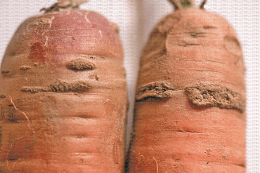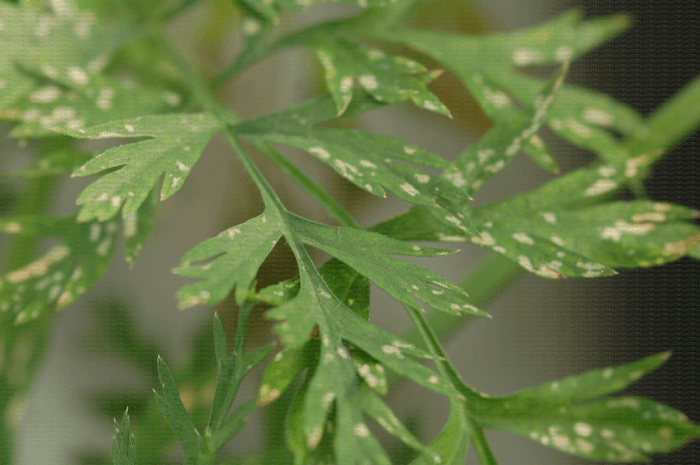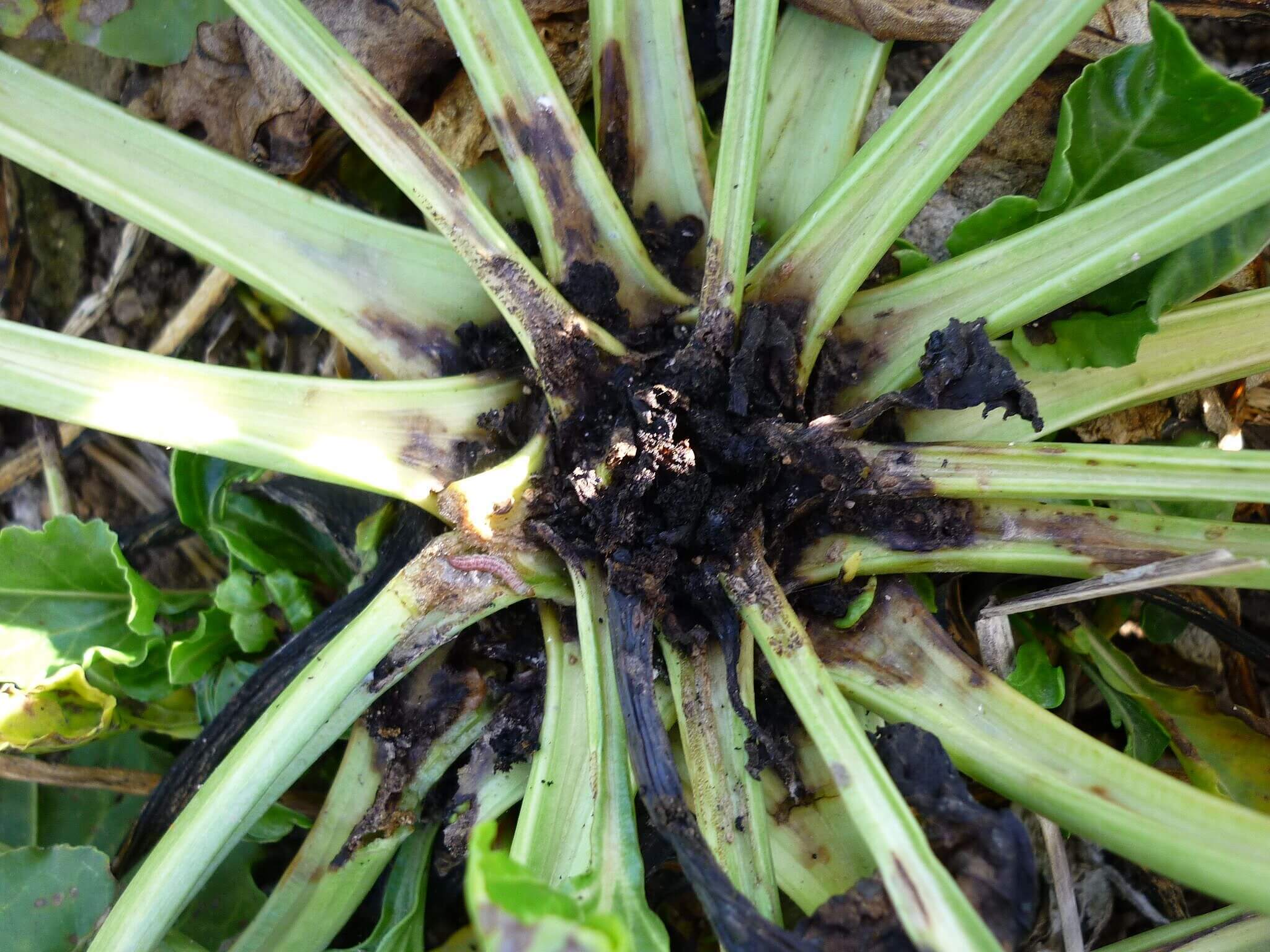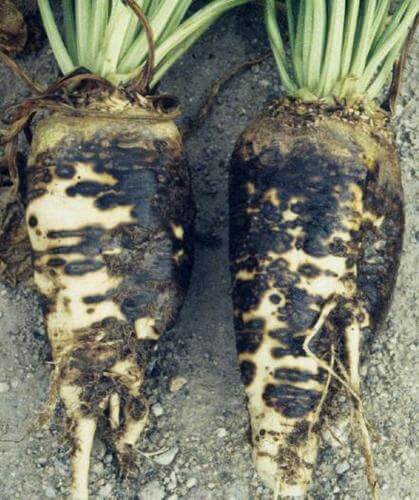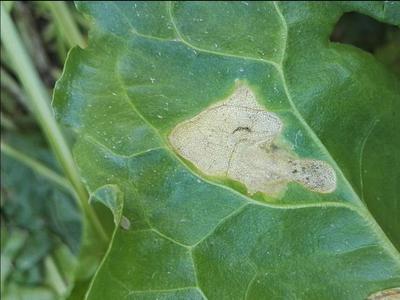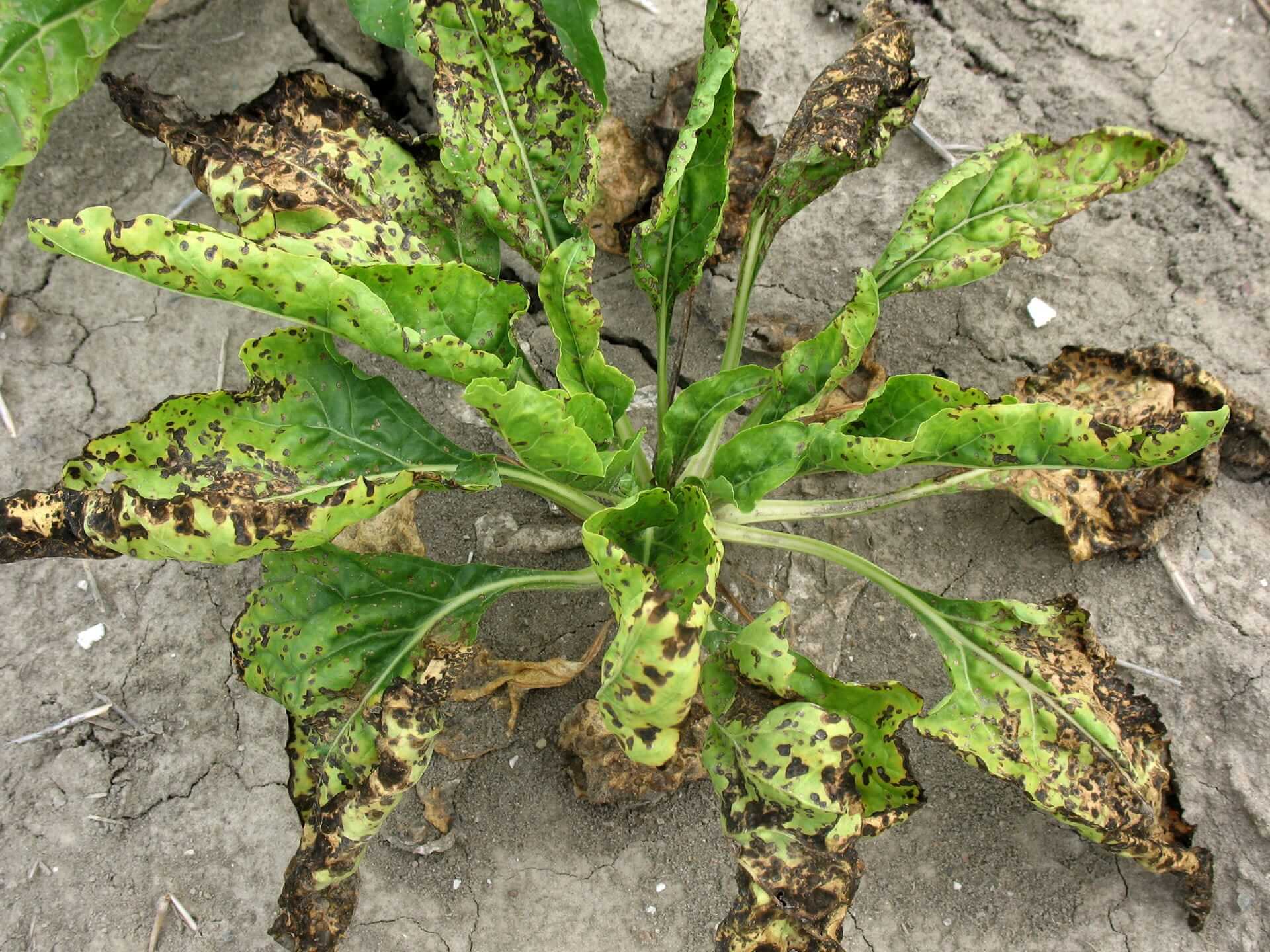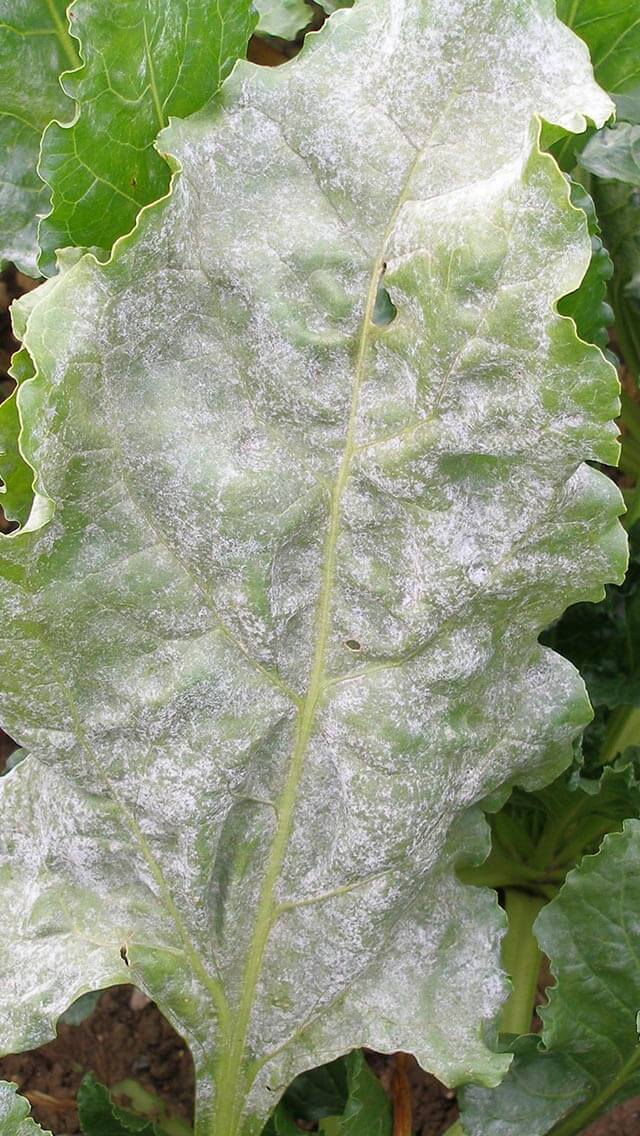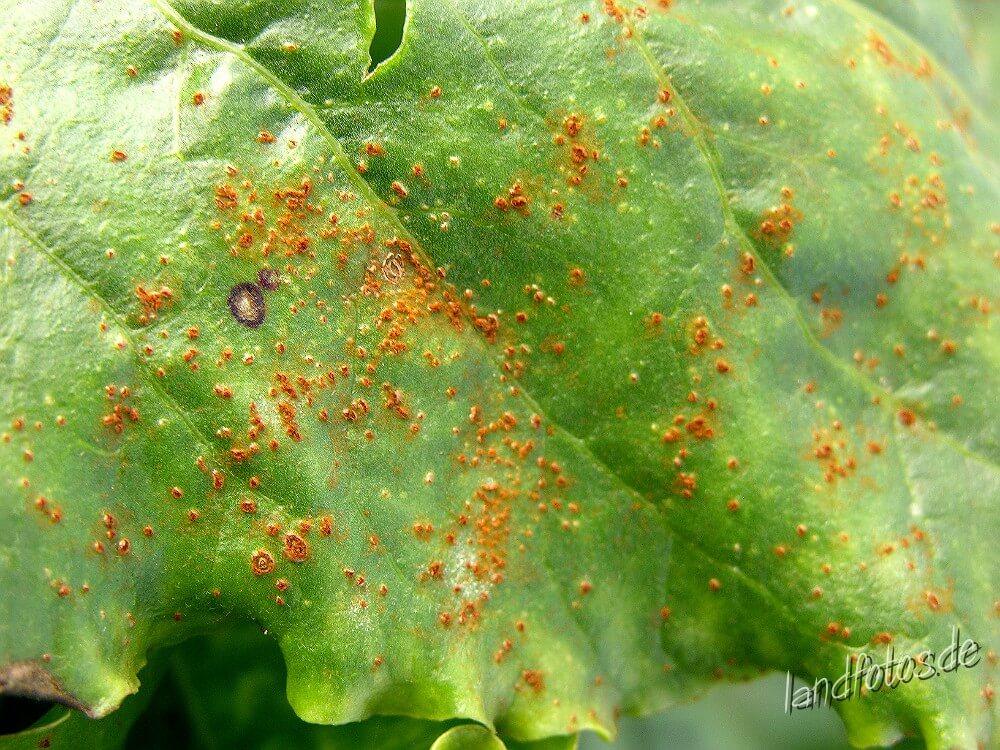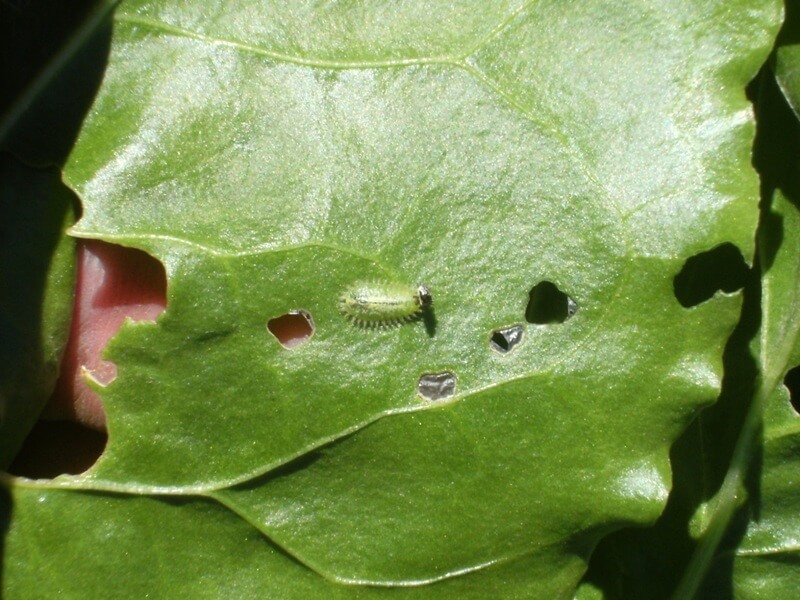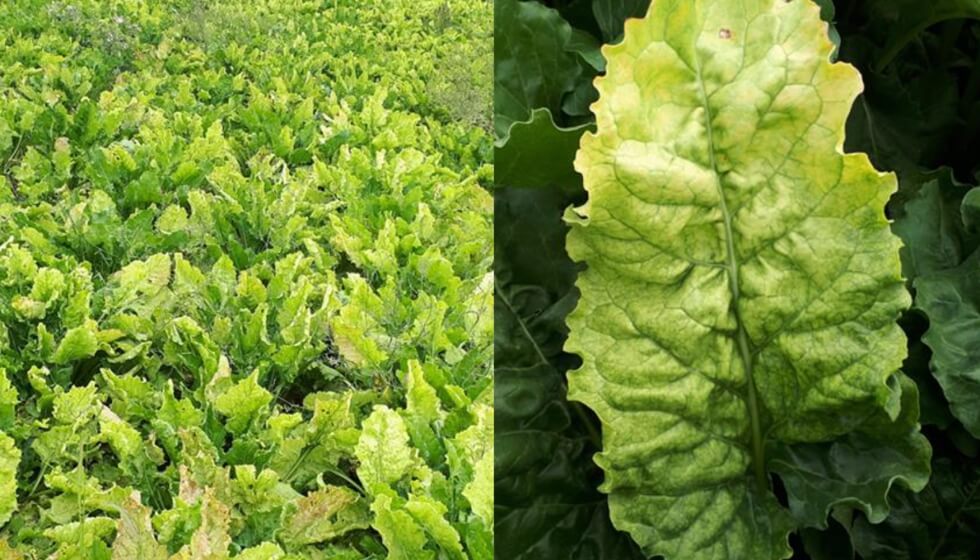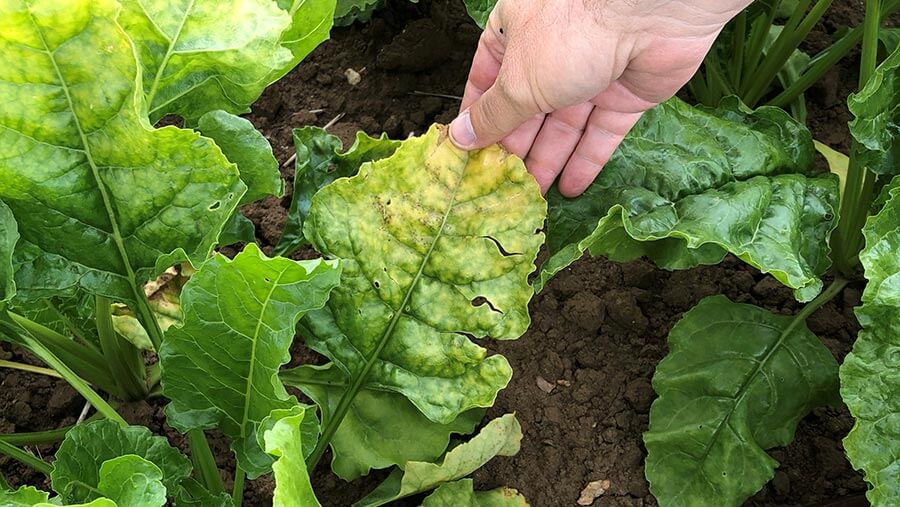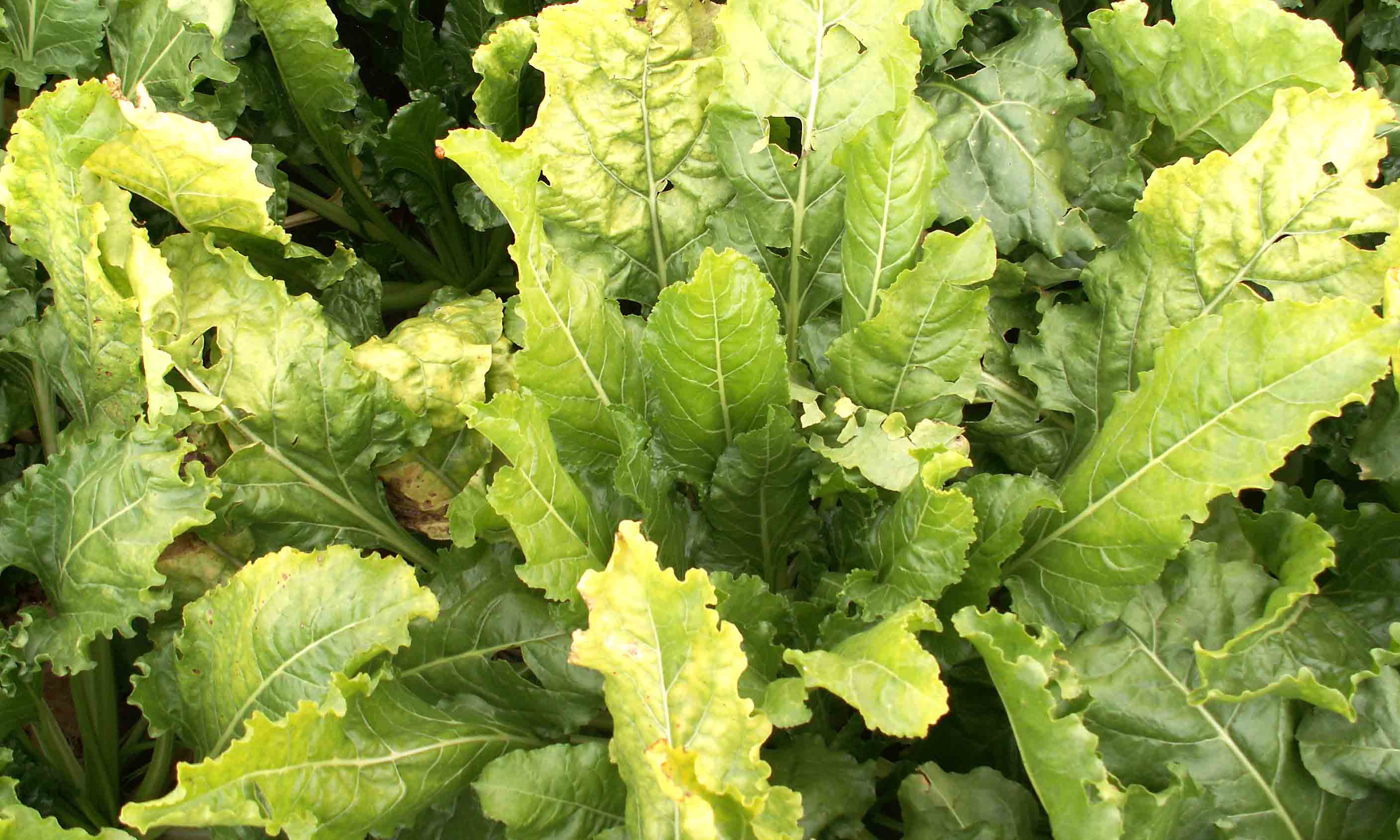
Zanahoria
How to recognize and combat bacterial infection in carrots
Bacteriosis
Bacterium
Type:
Risk to the plant:
HIGH
Xanthomonas Campestris
Pathogen:

Bacteriosis
WHO CAUSES IT?
Xanthomonas campestris is a gram-negative bacteria that infects a wide range of plants, including carrots. This bacteria spreads through small wounds or stomata on leaves, stems and roots. It enters the vascular system of the plant, where it multiplies and produces exopolysaccharides that block conductive vessels, interrupting the flow of water and nutrients. Xanthomonas campestris can survive on infected plant remains in the soil and in seeds, allowing its persistence from one season to the next. Under favorable conditions, such as high humidity and warm temperatures, the bacteria can spread rapidly, causing widespread infections in carrot crops.
SYMPTOMS
The bacteriosis caused by Xanthomonas campestris in carrot results in a series of symptoms that compromise both the appearance and health of the plant. The infection can begin at any stage of growth and generally manifests itself in the aerial parts of the plant.
- Dark watery Taches on the leaves.
- Yellow edges on the lesions on the leaves.
- Leaf blight, which causes the death of leaf tissue.
- Longitudinal lesions on the stems.
- Discoloration and necrosis in infected tissues.
- Wilting and dieback of plants in severe cases.


DEVELOPMENT CONDITIONS
Temperature:
20°C - 30°C
Humidity:
70% - 90%
HOW IS IT SPREAD?
Contaminated irrigation water, Infected gardening tools, Infected seeds, Contact with infected plant remains, Water splashes, Insect vectors
HOW TO ELIMINATE IT?
Home treatments
There are no home treatments
Natural allies
Chemical treatments
There are no treatments for this disease. Treatments are directed at the insect vectors that transmit it. See insect treatments.
RECOMMENDED PRODUCTS TO ELIMINATE THE PEST
Sponsored link
Sponsored link
Sponsored link
Sponsored link
Sponsored link
Sponsored link
Sponsored link
Effective against all types of fungi
Sponsored link
Sponsored link
Sponsored link
Sponsored link
Sponsored link
REPELLENT PLANTS
-
RECOMMENDATIONS





















